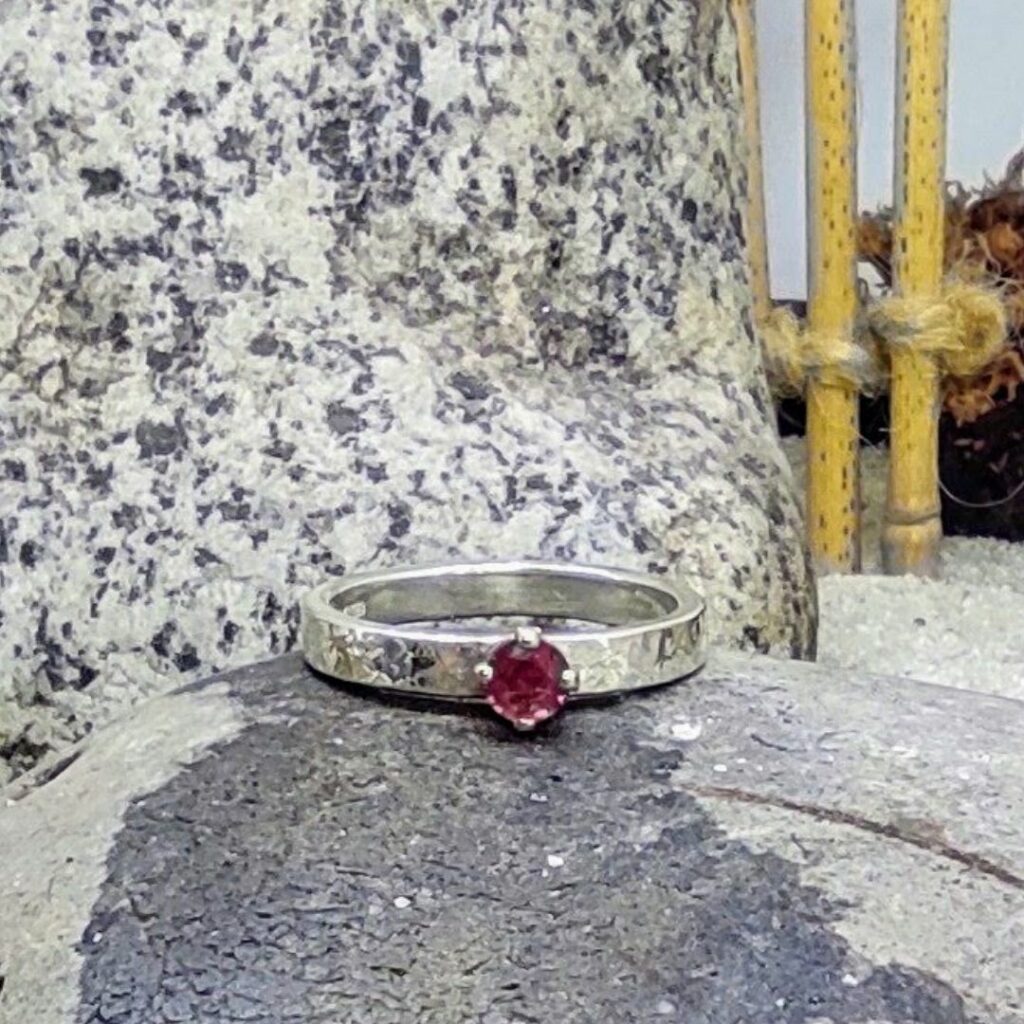This July birthstone is one of the rarest gemstones in the world commanding some of the highest prices. It’s striking red colour has prompted associations with love, passion and blood. It was once worn by warriors as a protective amulet, believed to protect against wounds. Medieval Europeans wore rubies to guarantee health, wealth, wisdom, and success in love.
Ruby is the gemstone of the 40th wedding anniversary and the gemstone of of the zodiac sign Cancer.
Facts, Care and Value
Ruby is the close cousin of sapphire. In fact they are, in fact, the same mineral, corundum. However, what makes them different is the presence of the mineral chromium which cause the ruby’s gorgeous red colour. The more chromium present, the deeper the red. All other colours of corundum are called sapphire (did you know sapphire occurs in almost every colour of the rainbow?).
The finest rubies and some of the most famous are found in Burma in the Mogok region. They are generally found in a gravel layer 6-30 metres (20 to 100 feet) below the surface. Miners wash the gravel and pick through to find the rubies. However conflict and embargoes have recently meat that these rubies are less available. Thus Thailand and Sri Lanka have become significant producers of fine rubies with other countries such as Afghanistan, Pakistan and India as well some countries in Africa becoming more prevalant.
Rubies and sapphires are some of the hardest gemstones, surpassed only by diamonds and moissanite. Ruby sits at 9 on the Mohs hardness scale which means it is very resistant to scratches. This makes it an excellent choice for jewellery worn everyday (such as engagement rings).
Care of rubies is pretty straight forward. Because of their hardness, it is generally safe to clean them mechanically, however if the ruby has small fractures,called inclusions, within it, they may cause the stone to break. Thus the safest way to clean a ruby is with warm soapy water and a soft bristle brush.
Rubies vary in value with colour and carat (size) the two most important factors when buying a ruby. The deeper the colour, also known as saturation, the more valuable. And rubies over a carat increase considerably in price.


If money is no object go for the biggest and clearest and vivid stone you can buy. However if you are shopping on a budget, even smaller rubies make an impact because of their vivid colour. Rubies with inclusions that are visible from 6 inches drop in price considerably and you can find some really lovely stones in that category. You can also find synthetic rubies at a fraction of the cost of mined rubies. And if you are most interested in the colour and not the clarity. Opaque gemstones are very cost effective.
On a final note, almost all rubies undergo heat treatment to enhance colour, hue and saturation. These are widely accepted as heat treatment basically mimics the earths own gemstone forming processes. However some rubies undergo fracture filling with glass and lead and this is generally accepted if it is disclosed. Always be aware, if it seems to good to be true, it most definitely is when it comes to rubies.
So there you have it, a little taster on rubies. Hopefully you found this useful. Please comment below is you have any questions! Thanks for stopping by!